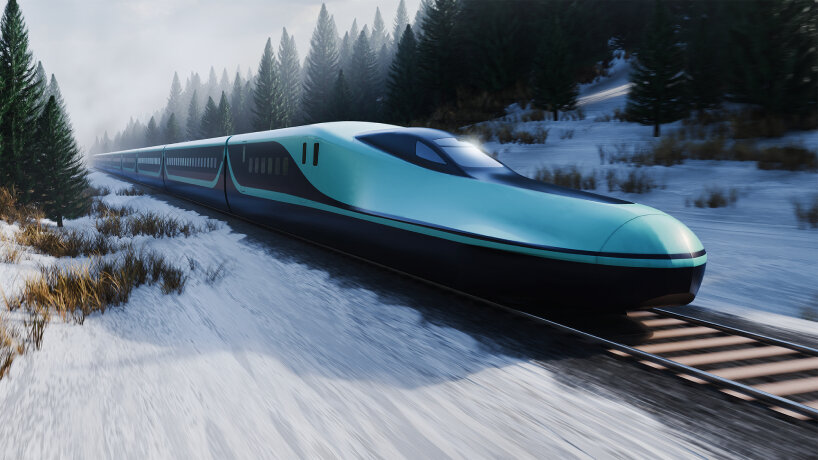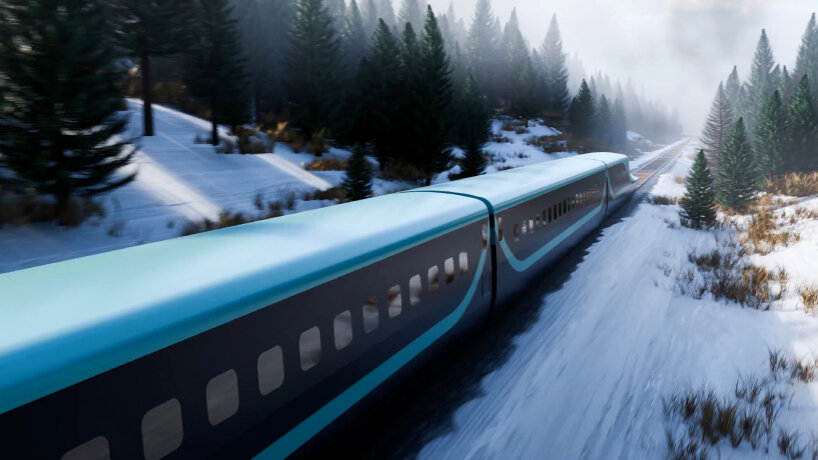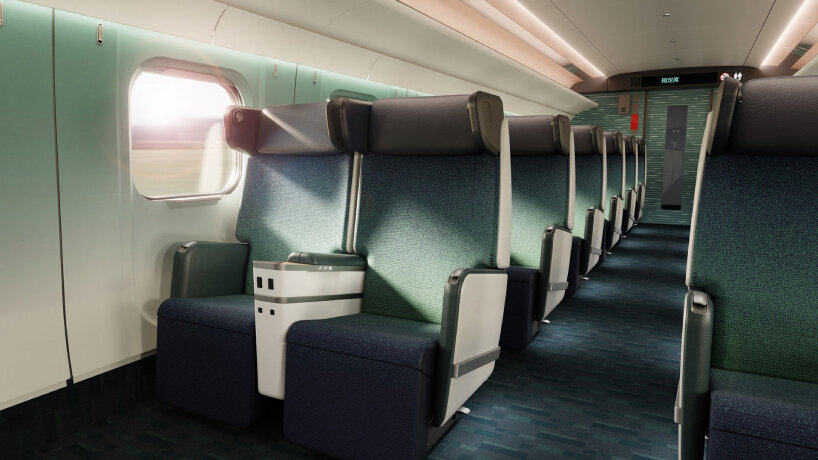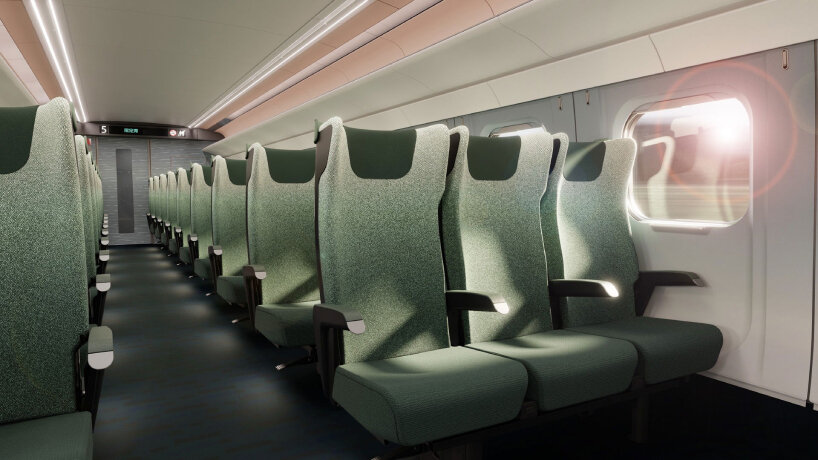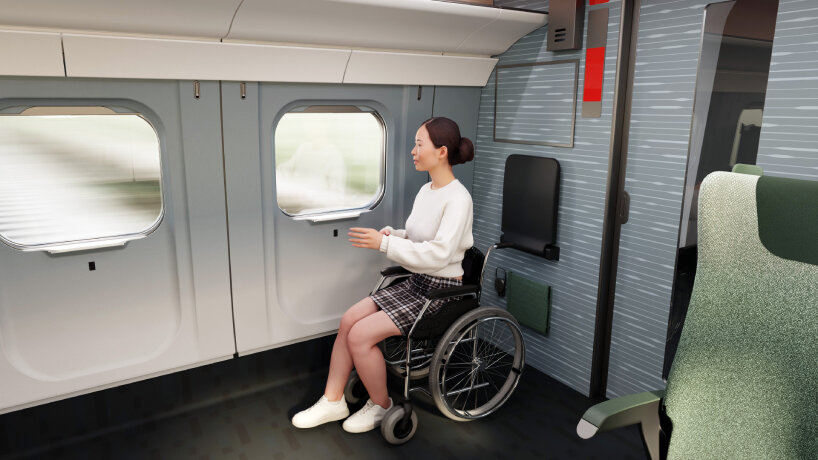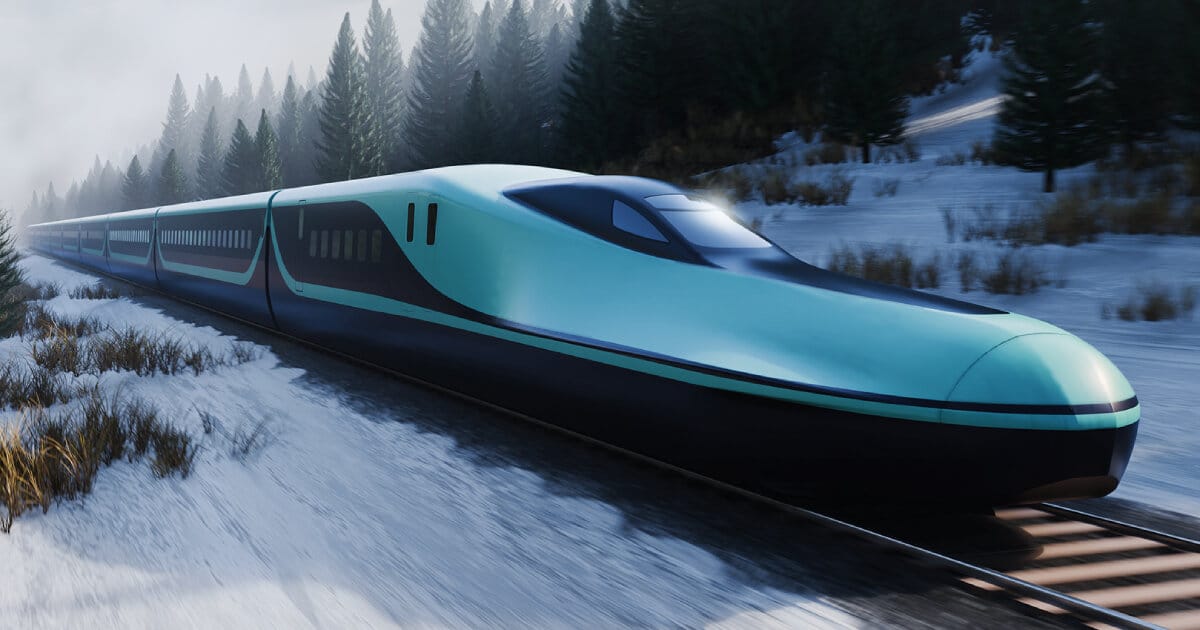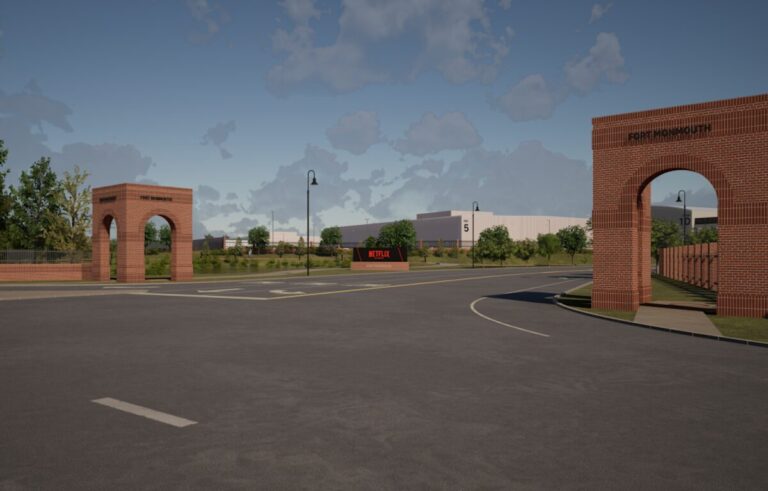E10 Shinkansen: A Japanese Masterpiece Combining Nature-Inspired Design and High-Speed Rail Innovation
E10 Shinkansen: A Vision for the Future of High-Speed Rail
Nature and Japanese Culture-Inspired Design
East Japan Railway Company (JR East) is developing a new model of Shinkansen trains, known as the E10, which is expected to begin operation by 2030. The train features an exterior design inspired by cherry blossom petals, reflecting the deep symbolism of this flower in Japanese culture.
In a notable step, the company has partnered with the British design studio Tangerine, adopting a streamlined design that runs along the train to maintain the traditional Shinkansen aesthetic, while adding innovative touches that give each car a unique character.
Colors Inspired by the Japanese Landscape
The colors of the train were carefully selected to reflect the beautiful nature it travels through during its journeys. The exterior features two shades of green:
• “Tsugaru Green”: A light green color that covers the top of the train, inspired by fields and rural areas.
• “Elm Green”: A darker green that covers the lower part, mimicking the forests and mountains found in the Tohoku region.
This color gradient not only enhances the aesthetic of the design but also strengthens the connection between the train and the environment it travels through.
Launch and Operation Plan
The E10 is set to succeed the E2 and E5 series, aiming to provide improvements in performance and design. According to the timeline:
• The prototype is expected to be completed by the fall of 2027.
• Testing operations will commence immediately after that.
• Commercial operations for the train are expected to begin in 2030.
Connecting Tokyo to the Tohoku Region
Practically, the E10 will connect Tokyo, the capital, to the Tohoku region in northern Japan, an area known for its mountainous terrain and scenic beauty. Each train will consist of 10 cars, ensuring a balance between passenger capacity and operational efficiency.
Innovative Technology for Passenger Comfort and Safety: The Advantages of the E10 Shinkansen
Design Focused on Accessibility for People with Disabilities
One of the standout features of the E10 Shinkansen is its significant attention to the experience of passengers with disabilities. Dedicated spaces for wheelchairs are placed next to windows, allowing those with limited mobility to enjoy their journey in comfort and with an open view.
Additionally, the number of seats per row has been reduced to just two, providing more space and freedom of movement inside the car, enhancing the overall comfort for all passengers.
Engineering Enhancements for Earthquake Resistance and Vibration Reduction
In line with Japan’s geological nature, the train’s design incorporates L-shaped guides to ensure the train remains stable on the tracks, even in the event of earthquakes. This development was done in collaboration with the British design company Tangerine.
Moreover, the train is equipped with “side camps,” which help to:
• Reduce vibrations during travel.
• Protect the structure from damage caused by deviations.
• Minimize wear and tear on parts, known as “strain reduction.”
Advanced Safety Systems
As part of the Alfa-X platform, used to test new railway technologies in Japan, the E10 Shinkansen is equipped with an advanced braking system that significantly reduces stopping distances, thereby enhancing passenger safety in emergency situations.
Storage Spaces and Work-Friendly Services During the Journey
In line with the move toward smarter and more comfortable trains for both work and travel, the new train offers a service known as “train office,” which includes:
• Larger spaces for storing oversized luggage.
• Power outlets available at every seat, allowing passengers to easily use computers and mobile devices during the journey.
Silent Driving System and Flexibility for Freight Transport
The E10 Shinkansen operates with an induction motor that doesn’t require traditional cooling fans, reducing noise inside the cars and providing a quieter travel experience.
More importantly, the train’s design supports flexibility for converting to freight transport when needed, thanks to adjustable interior spaces. This feature could prove useful in the future if a decision is made to transition the train to autonomous operation.
